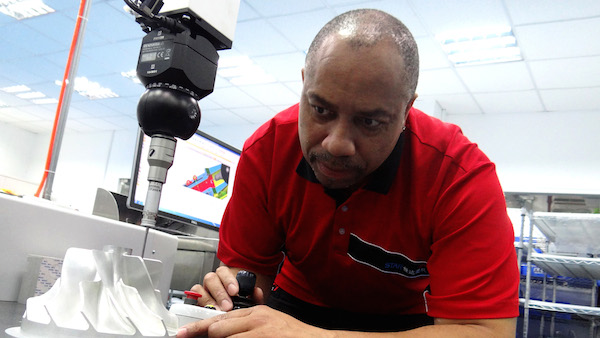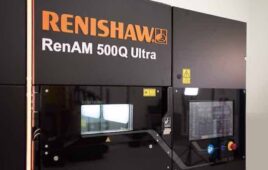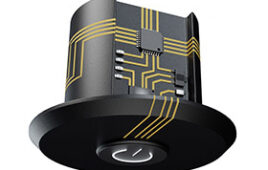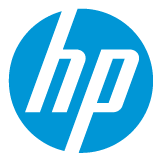Low-volume manufacturing companies are pushing the boundaries of manufacturing. Asking them a few key questions will help ensure quality results.
Gordon Styles
Star Prototype Manufacturing Co., Ltd
China
Low-volume manufacturing generally refers to the production of 50 to 100,000 maximum parts, depending on the process, tooling and materials being used. It lets product developers take advantage of cutting edge and traditional manufacturing techniques from CNC machining to plastic injection molding to 3D printing. Importantly, it can also be used for bridge production prior to mass production and help companies, both large and small, get their products to market first while offering the design flexibility that mass manufacturing cannot match. This mitigates risk and reduces the cost involved when making a design modification. These are just a few of the benefits low-volume manufacturing offers.

The coordinate measuring machine (CMM) is highly accurate and can be programmed to make repeat measurements quickly.
Just like any manufacturing job, proper quality control protocols must be in place for low-volume manufacturing to ensure a quality product. For designers, engineers and entrepreneurs looking to take advantage of the benefits of low-volume manufacturing, a few key questions could help you determine which manufacturing facility to entrust your design to.
Can I tour the manufacturing floor?
If you ask to tour the manufacturing floor and the answer is “no,” consider that a red flag. The business relationship with any low-volume manufacturer should be transparent. The equipment being used shouldn’t be a secret, but rather a selling point.
When touring the manufacturing floor, take notice of your surroundings. Is it well-organized and well-equipped? Be prepared to request records for employee training and certification and talk to the machinists. Also, be prepared to ask for verification of all documentary information, whether it’s in the form of business licenses and registrations, proof of insurance or ISO certificates.
Can you support me in optimizing my CAD design for manufacturing?
It’s important to make sure you’ve selected the correct manufacturing process for your design and it’s equally important to have a design that’s been optimized for manufacturing. There are ways to design products that will reduce time and money spent manufacturing while achieving the same results. Having an engineering team checking your design will make your life easier and will prevent avoidable errors.
Design for manufacturing is especially applicable to 3D printing. Designing specifically for 3D printing is not an easy task as multiple variables need to be accounted for. For example, it’s important to ensure that the 3D CAD file is optimized to be compatible with the tolerances of the machine that will be printing it. The AM250 printer, manufactured by Renishaw in the UK and used at Star Prototype, requires a minimal wall thickness of 0.2 mm and holes/gaps must be 0.4 mm or larger. These parameters are functions of powder size, beam profile and table movement among other variables. Closer tolerances can be achieved on the exterior of the 3D printed parts through a variety of techniques, including CNC machining. However, the post-finishing of internal features is somewhat limited. Features like holes and pockets can be added, but must fall within the line-of-site of a straight drill bit or mill to do so.
Do you test incoming materials?
The quality of raw materials varies widely around the world. To ensure that the materials are not fraudulent or non-conforming, find out where the material was purchased from and request a website address or other identifying information. Powder for 3D metal printing, for example, is only available from a relatively small number of suppliers or from the actual company that created the 3D printer. Knowing that the powder came from one of these sources should provide peace of mind. This little bit of legwork up front could pay large dividends down the road.
For subtractive manufacturing techniques like CNC machining, it’s also beneficial to find out what material identification tools are being used by the low-volume manufacturer. There is sophisticated metrology equipment for the testing of bar and plate stock for subtractive manufacturing. Star Prototype uses an Oxford Instruments Optical Emissions Spectrometer (OES) for inspecting incoming metal supplies, which enables a spark test to be conducted on incoming metals. Also, a hand-held PolyMax gun is used for Positive Material Identification of plastics. The PolyMax uses Raman scattering for the testing of plastics. These are just a few of the effective methods that can be used by a low-volume manufacturer for the testing of incoming materials.

The quality control lab at Star’s facility includes a diverse array of test equipment including OES, CMM, and Faro laser scanners.
What type of measurement tools do you use on finished parts?
There are a variety of technologies that can be used for ensuring a finished product meets the original design specifications. Laser scanning can be effective for measuring parts with complex geometries. The surface of a part is scanned to create a digital file that can be compared to the original CAD file. However, performing a complete dimensional measurement of a finished part should be a common practice of low-volume manufacturers. This can be completed using a coordinate measuring machine (CMM), which has a massively stable granite table with a flat surface. A precisely made sapphire crystal mounted on a touch probe assures measurement accuracy. To reduce temperature-induced measurement variations, the CMM should be located in a climate-controlled room. To ensure that the finished part matches the original CAD file, the CMM can be programmed to use the coordinates from the CAD file. Programming the machine using the CAD file allows it to automatically measure parts in succession.
Robotic exoskeleton case study
Dr. Peter Neuhaus, director of the exoskeleton project at the not-for-profit Institute for Human and Machine Cognition (IHMC), contacted Star Prototype to help them make a series of custom parts. They sought help with the Mina V2, a powered robotic exoskeleton designed to provide assisted mobility to people with a physical disability. It uses microcontrollers, sensors and electric motors with a sophisticated user interface.

Star Prototype built custom parts for the Mina V2, a powered robotic exoskeleton designed by the Institute for Human and Machine Cognition. The process involved a design for manufacturing review followed by fabrication via CNC machining of the steel, brass and aluminum parts.
“We love working with Star Prototype for all of our fabrication needs,” said Dr. Neuhaus. “They provide quotes quickly so we don’t waste time waiting, especially when the parts are needed to keep the project moving… What we really appreciate is the great customer service. Getting fast quotes, updates during the process, and pictures of the parts before they send them makes the entire process go smoothly.”
After completing a design for manufacturing review of the project, the Star team set to work making the components. The project required that all parts be made to tight tolerances, and that they fit together seamlessly to build the complex three-dimensional geometry required of a moving robotic device. During the course of manufacture, there were a few areas that needed special attention.
The main process used to make the steel, brass and aluminum parts for the Mina V2 was CNC machining. Each part was made using a tool and CNC machine appropriate for the level of tolerances and angles required. A turning center is the best way to make precisely round and concentric parts like a spring mount. In that case, a stainless steel rod is held firmly in the jaws of the rotating chuck to prevent any unwanted vibration as it’s being turned down to the final size.
With the need for tight tolerances, Star decided to machine the most complex parts on its 5-axis CNC mill. Having such equipment helps to avoid moving the piece from one holding fixture to another on different machines, which makes it tough to hold tight tolerances.
For instance, a parallel spring mount with multiple faces and rounded edges made it difficult to hold properly when drilling out the center hole. In the end, Star created a special fixture to hold this part securely to maintain the right dimensions.
Once the primary machine work was finished, all of the aluminum parts were bead blasted, cleaned and prepared for aluminum anodizing. Anodizing improves the corrosion resistance of the aluminum, provides a hard scratch-resistant surface, and enhances the cosmetic appearance.
Not all alloys accept the anodizing treatment equally well, but AL-6061 is a good choice and produces nice results. After bead blasting and cleaning, the aluminum has a non-reflective, matte finish.
After anodizing, the parts have a uniform, semi-gloss dark blue metallic coating. Anodizing adds a thin layer of material onto the surface, about 3 to 5 microns. This is enough to interfere with close fit tolerances and machine threads, so threaded holes must be cleaned after anodizing, exposing bare metal.
Star Prototype Manufacturing Co., Ltd
www.star-prototype.com
Filed Under: 3D printing • additive • stereolithography, TEST & MEASUREMENT





Tell Us What You Think!